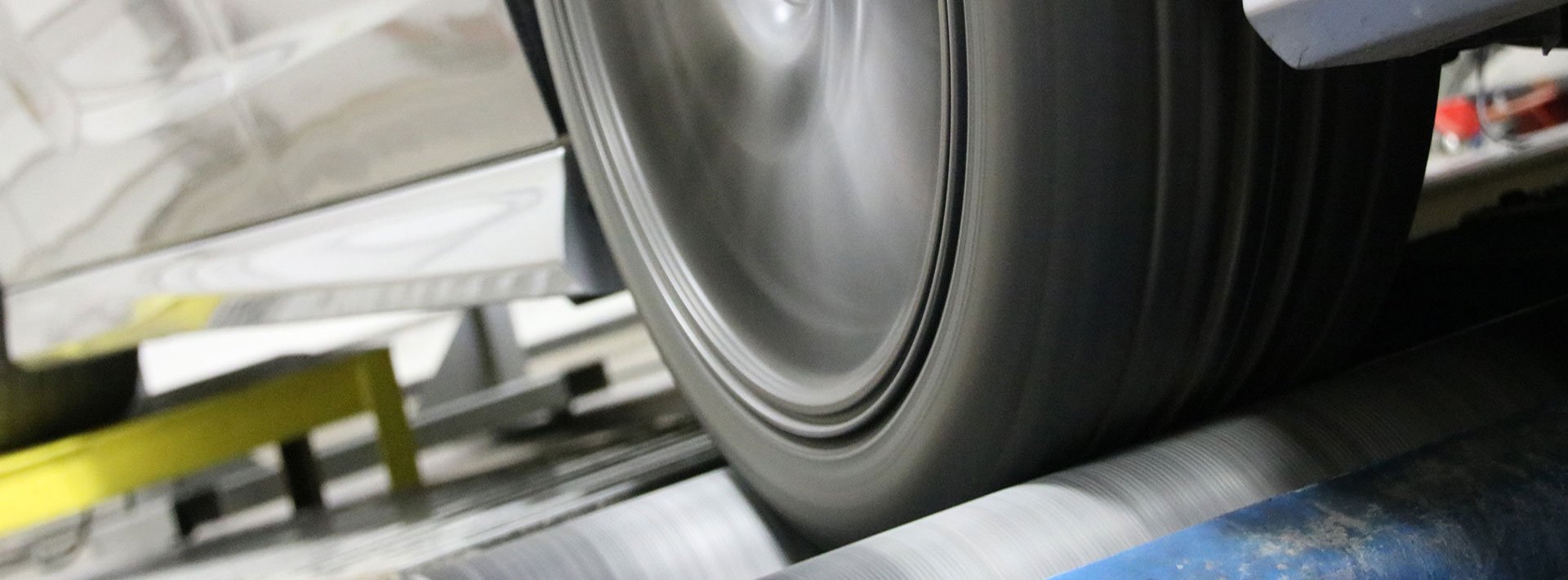JIS D4217 Steel Wheel Rim High Speed Testing
The JIS D4217 standard specifies methods for testing the high-speed dynamic performance of steel wheel rims. This test is critical in ensuring that automotive components meet stringent safety and durability requirements, especially under conditions where wheels are subjected to high rotational speeds.
Steel wheel rims play a crucial role in the safety and efficiency of vehicles. They must withstand significant forces generated during high-speed driving while maintaining structural integrity and minimizing deformation. The JIS D4217 test simulates real-world operating conditions by subjecting the wheel rim to rapid angular acceleration, deceleration, and stress cycling.
The testing process involves mounting the wheel rim onto a specially designed high-speed dynamometer that can precisely control rotational speed, torque, and angular displacement. The test rig is capable of simulating various driving scenarios, including sudden stops, sharp turns, and constant high-speed operation.
During the test, sensors continuously monitor key parameters such as radial force, lateral force, and moment distribution across the wheel rim. These measurements are used to evaluate the rim’s ability to maintain proper alignment and balance under dynamic conditions. The test also assesses the rim’s resistance to deformation and its capacity to endure repeated loading cycles without failure.
The high-speed testing process is not just about assessing immediate performance but also ensuring long-term reliability. By subjecting the wheel rims to a controlled environment that mimics real driving conditions, engineers can identify potential weaknesses or design flaws early in the product lifecycle. This allows for iterative improvements and enhances overall vehicle safety.
The results of this test are critical for quality assurance teams, compliance officers, and R&D engineers working on automotive components. The data generated provides valuable insights into the mechanical properties of steel wheel rims, helping manufacturers to optimize designs and materials for better performance and durability.
Compliance with JIS D4217 is essential for companies operating in the automotive sector, as it ensures that their products meet international standards for safety and quality. This test is particularly important for organizations involved in manufacturing, testing, and certification of steel wheel rims.
Applied Standards
- JIS D4217: Specifications and Methods for Steel Wheel Rims
- ISO 9013: High-Speed Dynamic Testing of Wheel Rims
- ASTM E856: Standard Test Method for High-Speed, High-Torque Testing of Wheel Rims
Benefits
- Increased Safety: Ensures that wheel rims can withstand high-speed conditions without compromising structural integrity.
- Durability Improvement: Identifies potential weaknesses in the design and materials, leading to longer-lasting components.
- Compliance Assurance: Confirms that products meet international safety standards.
- Enhanced Reputation: Demonstrates a commitment to quality and reliability, which can improve brand image.
Why Choose This Test
- Precise Simulation of Real-World Conditions: The test rig accurately simulates high-speed driving scenarios, providing reliable data for analysis.
- Comprehensive Evaluation: Evaluates multiple parameters including force distribution and deformation behavior under dynamic loads.
- Advanced Instrumentation: Uses state-of-the-art sensors to gather detailed performance metrics.
- Expertise and Experience: Our team of experienced engineers ensures accurate testing and interpretation of results.





